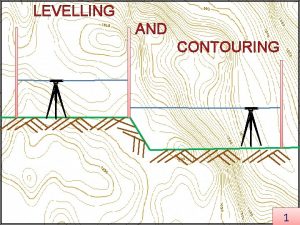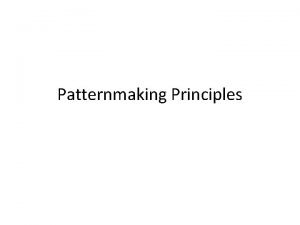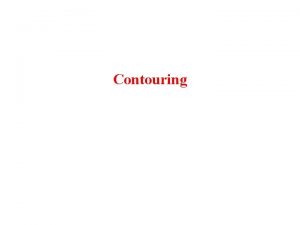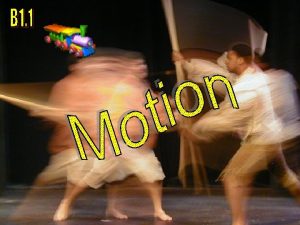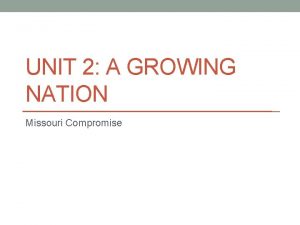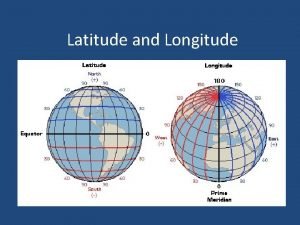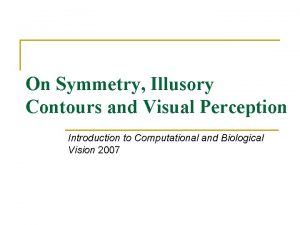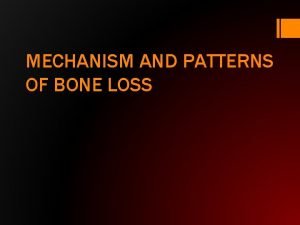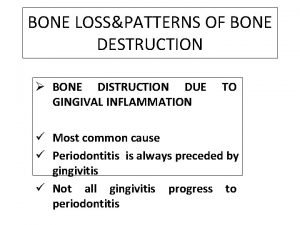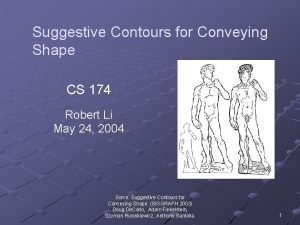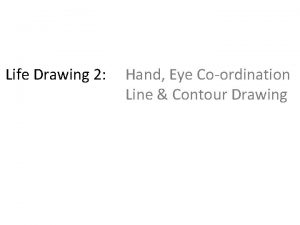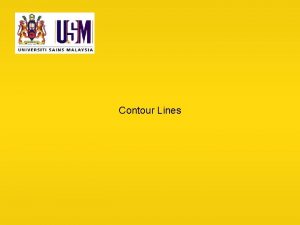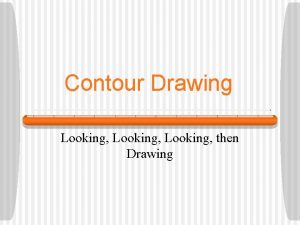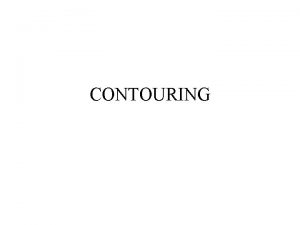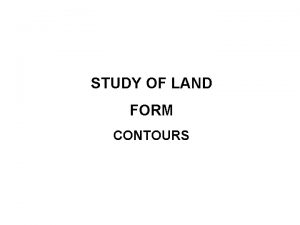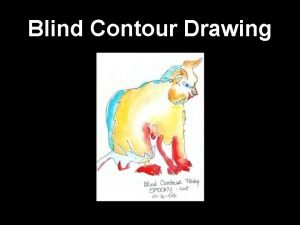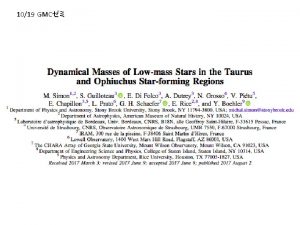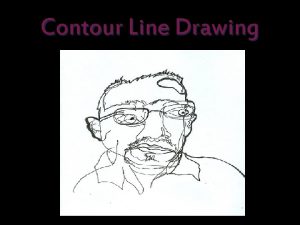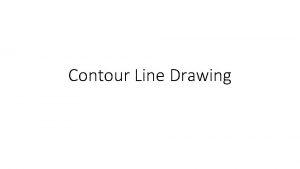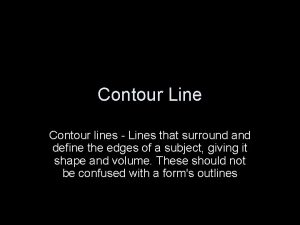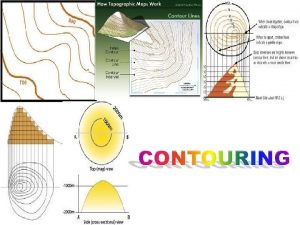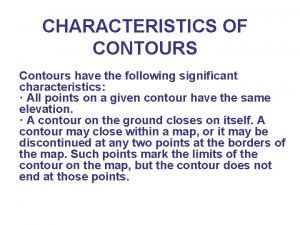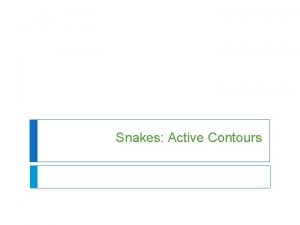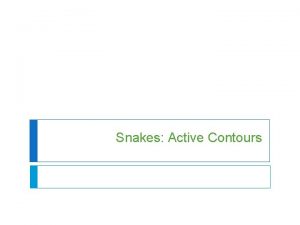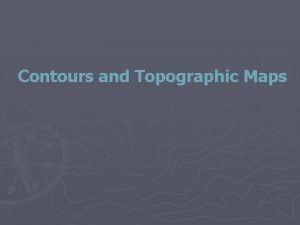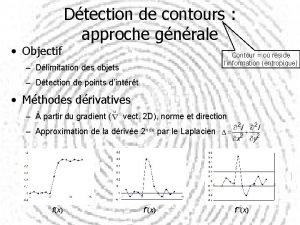CONTOURING Contours A Contour is an imaginary line





















- Slides: 21

CONTOURING

Contours A Contour is an imaginary line on the ground joining the points of equal elevation or reduced level. Contour line A contour line is a line on the map representing a contour.

Contour interval The vertical distance between two successive contours is known as ‘Contour interval’. It remains constant for a given map. The difference in R. L. ’s of two contour gives contour interval.

COMMON VALUES OF THE CONTOUR INTERVAL For large scale maps of flat country, for building sites, for detailed design work and for calculation of quantities of earth work; 0. 2 to 0. 5 m. ii) For reservoirs and town planning schemes; 0. 5 to 2 m. iii) For location surveys. 2 to 3 m. iv) For small scale maps of broken country and general topographic work; 3 m, 5 m, 10 m, or 25 m. i)

Horizontal equivalent The horizontal distance between two successive contours is known as ‘Horizontal equivalent’. It is not constant for a given map, it varies according to the steepness of the ground.

CHARACTERISTICS OF CONTOURS i) All points in a contour line have the same elevation. ii)Flat ground is indicated where the contours are widely separated and steep- slope where they run close together.

CHARACTERISTICS OF CONTOURS iii) A uniform slope is indicated when the contour lines are uniformly spaced and iv) A plane surface when they are straight, parallel and equally spaced.

CHARACTERISTICS OF CONTOURS v) A series of closed contour lines on the map represent a hill , if the higher values are inside 80 75 70 65 60 60 65 70 75 80 HILL

CHARACTERISTICS OF CONTOURS vi) A series of closed contour lines on the map indicate a depression if the higher values are outside 75 70 65 60 DEPRESSION 70 60 65 70 75 80

CHARACTERISTICS OF CONTOURS x) Contour lines cannot merge or cross one another on map except in the case of an overhanging cliff. 40 30 20 10 OVERHANGING CLIFF

CHARACTERISTICS OF CONTOURS xi) Contour lines never run into one another except in the case of a vertical cliff. In this case , several contours coincide and the horizontal equivalent becomes zero. 50 40 VERTICAL 30 CLIFF 20 10 OVERHANGING CLIFF 10 20 30 40 5050

CHARACTERISTICS OF CONTOURS Xii) Depressions between summits is called a saddle. It is represented by four sets of contours as shown. It represents a dip in a ridge or the junction of two ridges. 70 80 90 SADDLE 70 80 90 90 110 100

METHODS OF CONTOURING There are mainly two methods of locating contours: (1)Direct Method and (2) Indirect Method. a) by square method b) by cross sections c) by tacheometric method

INTERPOLATION OF CONTOURS There are three main methods of interpolation: i) By Estimation: - The position of the contour points between ground - points are estimated roughly and the contours are then drawn through these points. This is a rough method and is suitable for small scale maps. ii) By arithmetical calculation: - This is very tedious but accurate method and is used for small areas where accurate results are necessary. The contours are interpolated as under:

INTERPOLATION OF CONTOURS ii) By arithmetical calculation: -

INTERPOLATION OF CONTOURS ii) By arithmetical calculation: Now consider the ADMP is surveyed plot, then whole area is divided into no. of squares and RL are plotted at every spot. Then if the required contour is 89. 000 m, then consider small square ABGH.

INTERPOLATION OF CONTOURS ii) By arithmetical calculation: - Then the difference in elevation between A &B is (90. 895 – 88. 420 = 2. 475 m) in distance of 5 m. Then by similar triangle method. 0. 58/x = 2. 475/5, x = 1. 17 m from point A. Similarly of point A& H 0. 58/x = 2. 135/5, x = 1. 358 m from point A. Then plot 89. 000 m contour by scale.

Observation table S. N. OBSERVATION BS IS RISE 1. 115 2 1. 100 3 0. 990 4 0. 890 5 0. 800 6 0. 525 7 0. 950 8 0. 755 REMARKS 100. 000 BM 1. 000 9 1. 170 10 1. 115 11 2. 000 12 1. 995 12 RL FS 1. 800 1 FALL 1. 995 CHECK : - ƩBS – ƩFS = ƩRISE – ƩFALL = LAST RL – FIRST RL. CP 1

S. N. OBSERVATION BS 12 IS 1. 995 13 1. 190 14 0. 900 15 1. 890 16 1. 800 17 0. 925 18 0. 950 1. 755 RL REMARKS FS 1. 500 20 2. 170 21 2. 115 22 1. 350 23 0. 900 24 0. 995 24 FALL 1. 995 12 19 RISE 0. 995 CHECK : - ƩBS – ƩFS = ƩRISE – ƩFALL = LAST RL – FIRST RL. CP 2

S. N. OBSERVATION BS 24 IS 0. 995 25 1. 190 26 0. 900 27 1. 890 28 1. 800 29 0. 925 30 0. 950 1. 755 RL REMARKS FS 1. 500 32 2. 170 33 2. 115 34 1. 350 35 0. 900 36 1. 115 36 FALL 0. 995 24 31 RISE 1. 115 CHECK : - ƩBS – ƩFS = ƩRISE – ƩFALL = LAST RL – FIRST RL. CP 2

S. N. OBSERVATION BS 36 IS 1. 115 37 1. 290 38 1. 900 39 0. 890 40 1. 450 41 0. 925 42 1. 950 1. 755 RL REMARKS FS 1. 500 44 1. 170 45 2. 115 46 1. 300 47 1. 900 48 FALL 1. 115 36 43 RISE 0. 995 CHECK : - ƩBS – ƩFS = ƩRISE – ƩFALL = LAST RL – FIRST RL. CP 3
 Direct method of contouring is
Direct method of contouring is Added fullness
Added fullness Milady chapter 24 review questions answers
Milady chapter 24 review questions answers False contouring
False contouring An imaginary line joining the points of equal elevation
An imaginary line joining the points of equal elevation Imaginary line joining points of equal elevation
Imaginary line joining points of equal elevation Body planes directions and cavities
Body planes directions and cavities It indicates that you can draw an imaginary line
It indicates that you can draw an imaginary line Vertical plane mirror
Vertical plane mirror Where did the missouri compromise imaginary line run
Where did the missouri compromise imaginary line run Important lines of latitude and longitude
Important lines of latitude and longitude Illusory contours definition
Illusory contours definition Wall hemiseptal
Wall hemiseptal Tubular artery sign
Tubular artery sign Active contours without edges
Active contours without edges Bulbous bone contours
Bulbous bone contours Suggestive contours
Suggestive contours Russian intonation
Russian intonation Contour line drawing of hand
Contour line drawing of hand Define contour drawing
Define contour drawing Contour lines definition
Contour lines definition Whats a contour line
Whats a contour line
